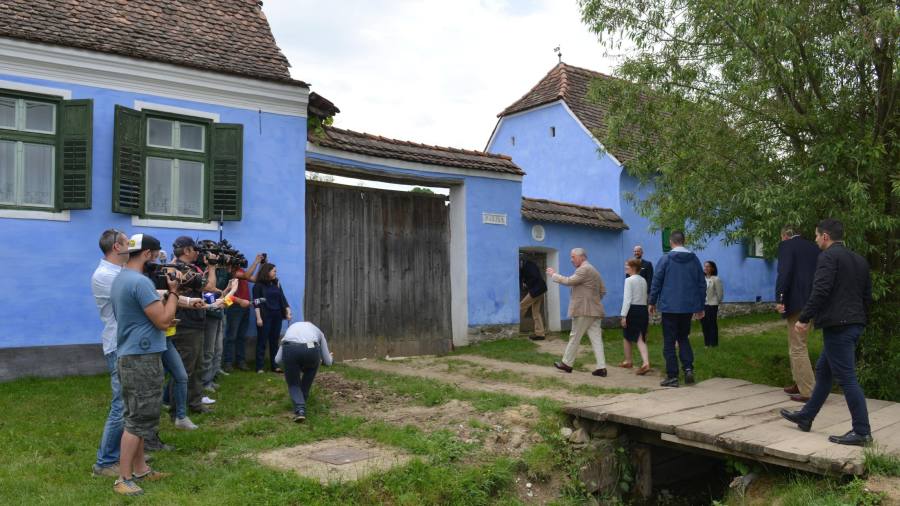
Of all King Charles’ passions — the environment, homeopathy, traditional English architecture and Laphroaig whiskey — perhaps the least well-known is his love for Transylvania.
The King (then Prince of Wales) voiced his feelings most recently in a video broadcast in 2020, declaring: “Romania holds a very special place in my heart. I can trace my forebears all the way back to Vlad Țepeș, which may explain why, each time I visit, there is a part of me that feels at home.” This revelation was all the more surprising given that Țepeș was the gruesome 15th century Romanian ruler who impaled his opponents and allegedly served as inspiration for Bram Stoker’s Dracula.
Almost every year over the past two decades, Charles has visited the Transylvanian village of Viscri — a gem just north west of Brașov, tucked away behind leafy hills, where people still travel in horse-drawn carts. On most of his trips, the King stayed in a modest blue-painted house that he acquired in 2006.
This summer, the house (which had previously been a guesthouse) was opened to the public for the first time, welcoming hundreds of people every day. One sunny afternoon, it was brimming with tourists slightly underwhelmed by the sights. “Not exactly what you’d expect from a royal house,” I overheard a Romanian teenager remarking to her parents as she posed for selfies against the cornflower-blue wall.
I was instantly transposed to my own grandparents’ house in Vințu de Jos, some 150km west through the Transylvanian countryside, where I spent most of my summers and winters growing up. A photograph of the last owner of the house sitting playfully on a child’s wooden swing, her feet up in the air, brought a moment of déja-vu. My own late grandmother would also break her day of hard labour by taking a swing in a hammock under an old vine. Sadly, my family had to sell the village house, as everyone had moved out and it was falling into disrepair.
Most families, particularly German-speaking ones, went through a similar experience, leaving the villages after the fall of communism (the Germans known as Saxons, had settled in Transylvania in the middle ages). Some, like me, left the country altogether. But one villager, Caroline Fernolend, decided to stay. Her parents had inherited the keys to the fortified church in Viscri and she lobbied government officials in Bucharest and influential foreigners on how rural tourism might be a route to economic revival for villagers like hers.
“They all laughed at me, we got no support from authorities,” she recalls. It was only through Lady Jessica Douglas-Home, who had founded the Mihai Eminescu Trust (a charity promoting education and culture in Romania) in the 1980s, that Prince Charles came to the country for the first time in 1998.
By this time, Fernolend had little hope of assistance: “So many people had come through our house, everyone making promises that were never kept.” But Douglas-Home did, and so did the Prince. His first visit to Viscri was exactly two decades ago. “My mother made chicken soup, we ate it up at the fortress,” Fernolend recalls. “There was no publicity, so he felt at ease, he could walk about without anyone recognising him. We went on foot from one village to another, he was fascinated by the lush nature, the flowers, the mushrooms.”
In the years that followed, the King was a regular visitor. He asked Fernolend how best to help — and she replied that owning a house here would help raise awareness of Romania’s rich cultural heritage. Initially the Mihai Eminescu Trust donated the blue house to Charles, and it was later purchased by his foundation, the Prince’s Trust. The charity ran local workshops for crafts at risk of extinction, managed the blue house as a guest house, and helped install a sewage system in Viscri. Gradually, more tourists were drawn to the area.
This summer, demand to see the house was so great that the Trust decided to open the blue house to day-trippers, rather than using it as a guest house. Vlad Giurgiu, a tour guide there, acknowledges that the King may not be able to visit as often as he once did. But the blue house will never be empty, he says. “Either way, people will keep coming”.